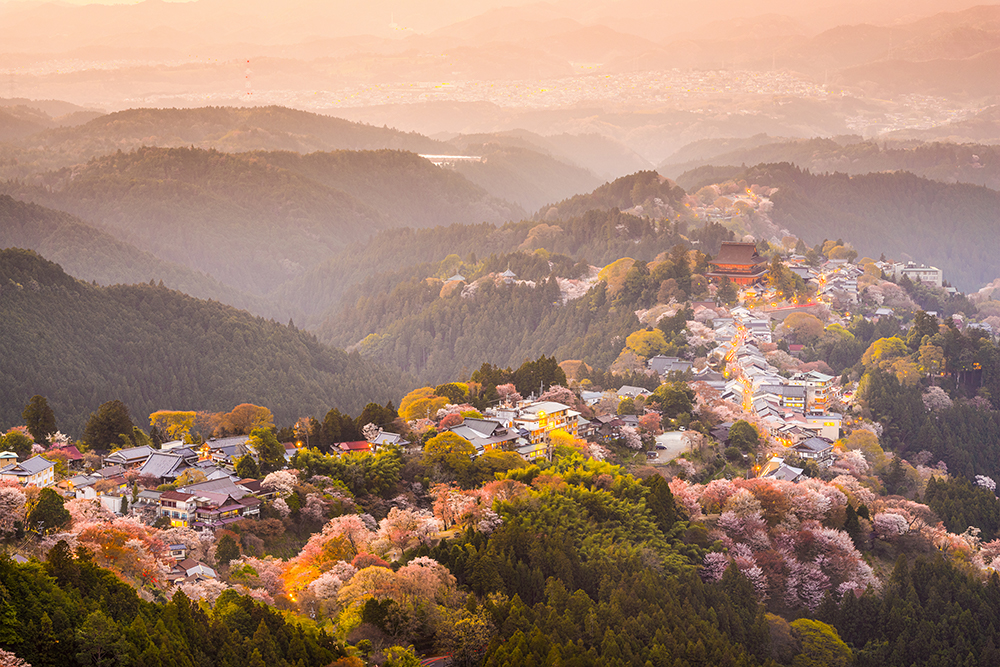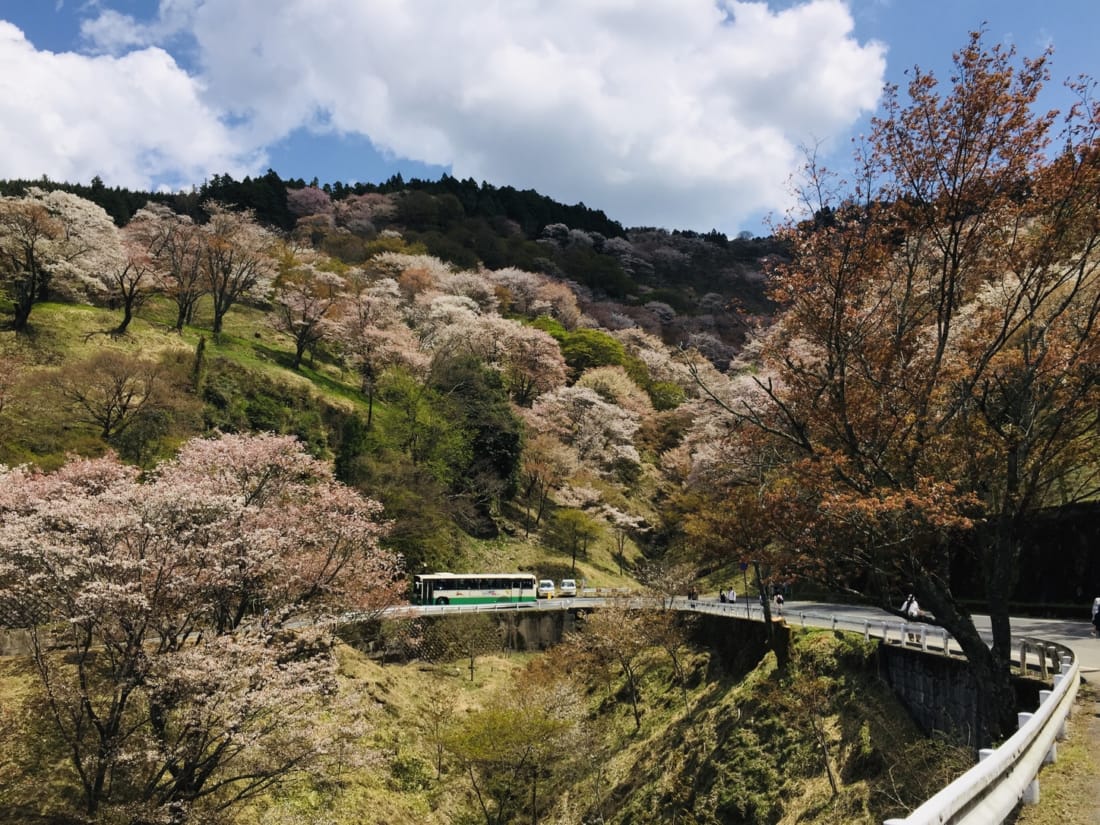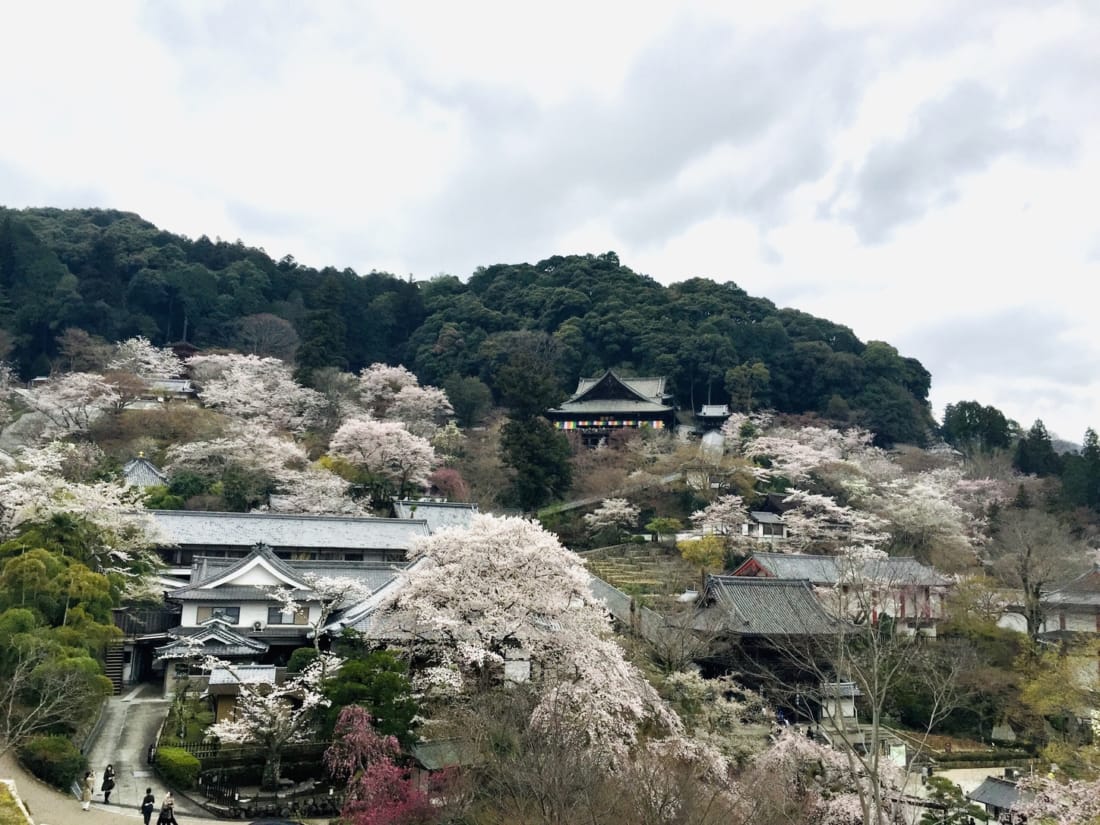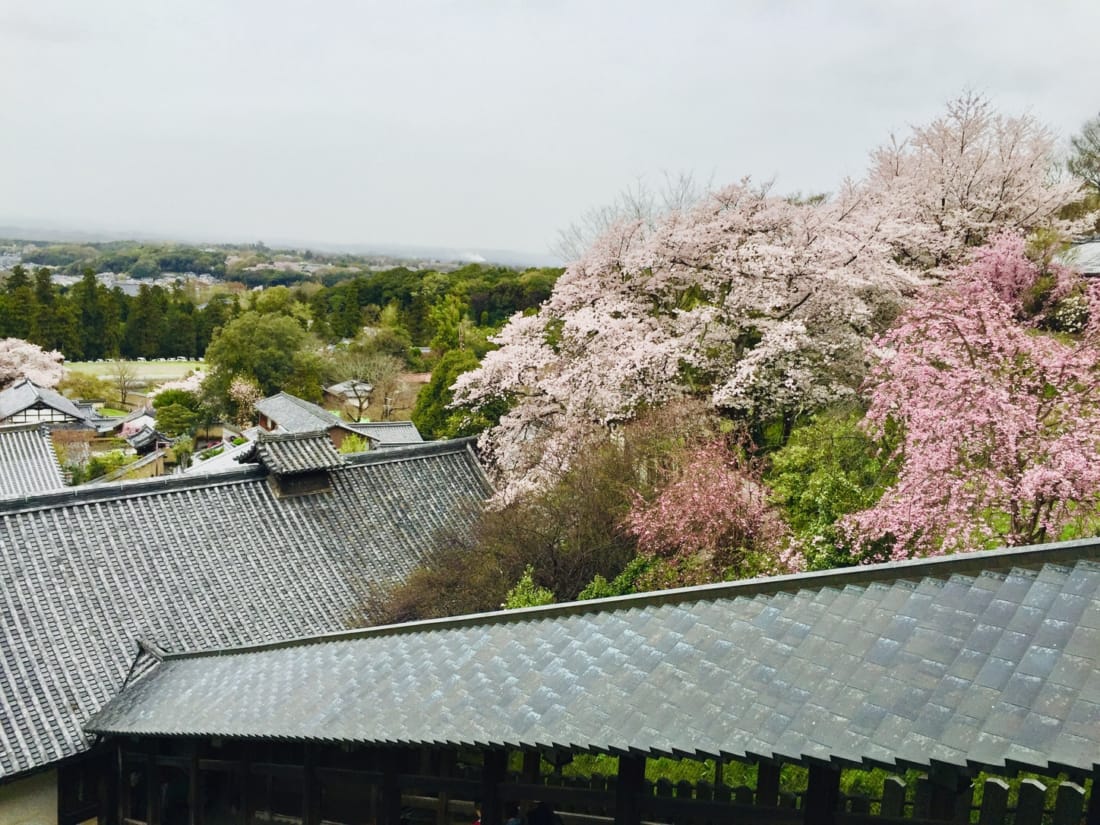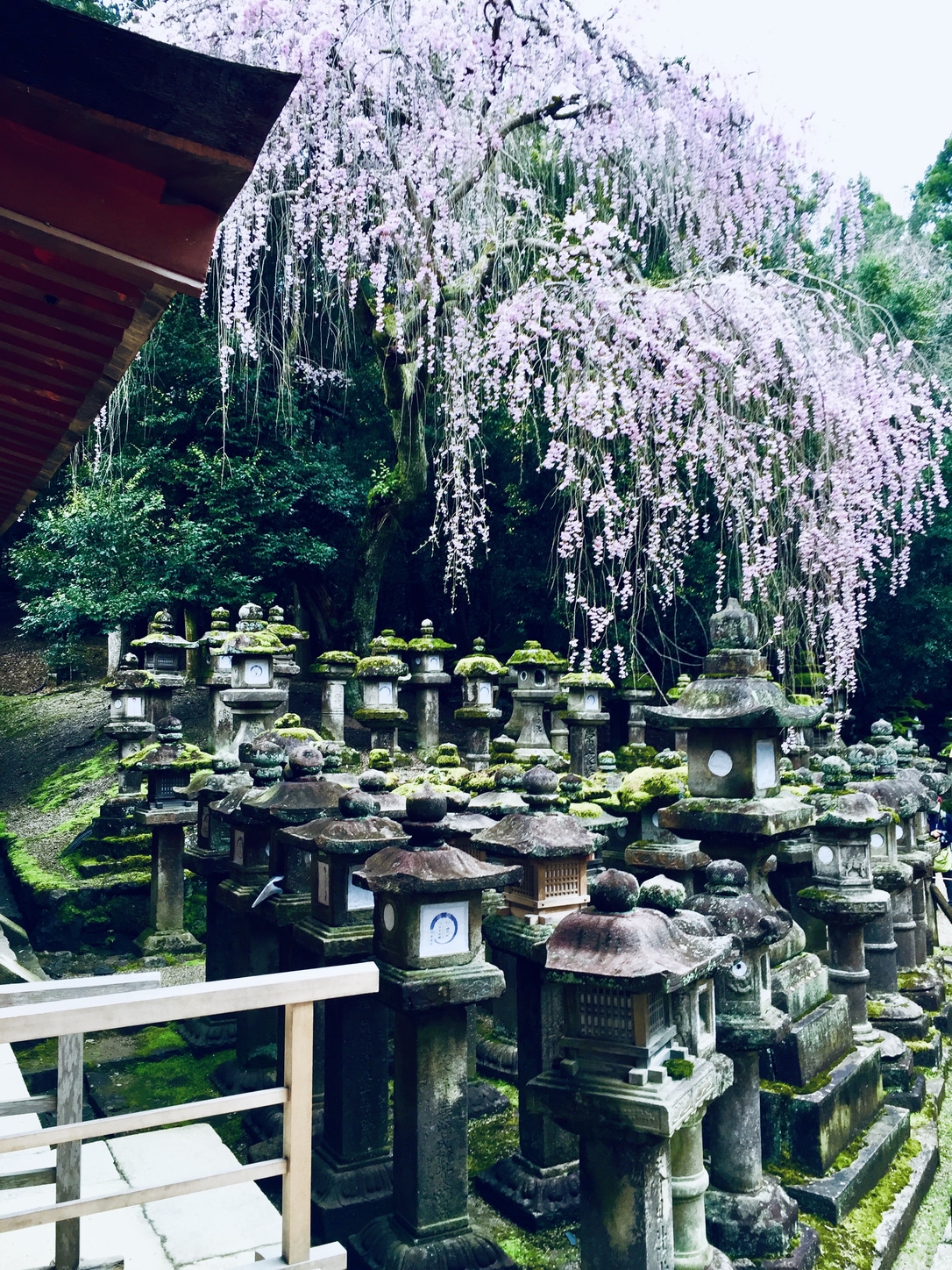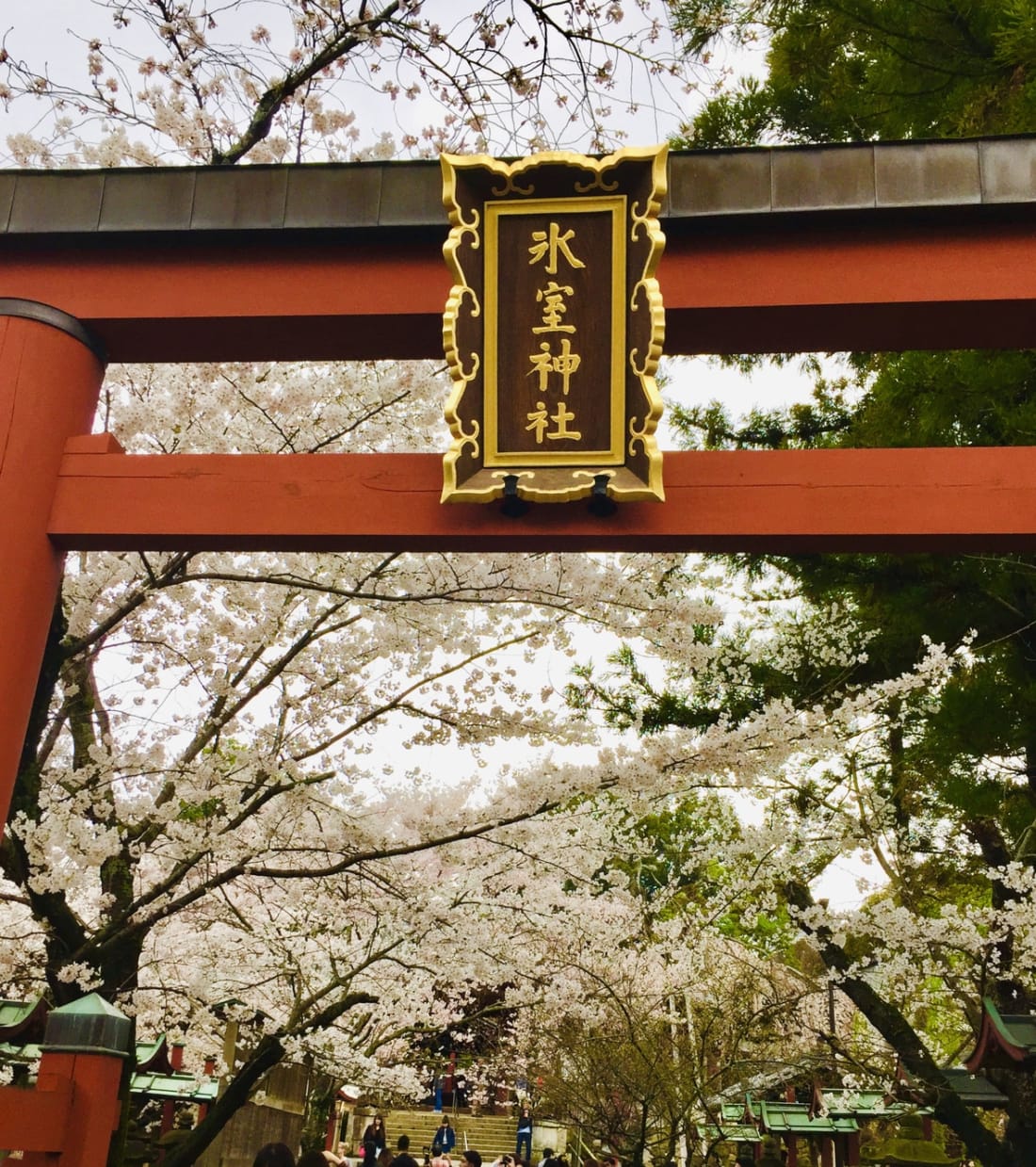According to the passages of Kojiki – one of the first written records of Japan – the sakura (aka cherry blossom) has been treasured by the people of Japan since ancient times.
Furthermore, the poems contained within the Manyoshu stunningly illustrate the ethereal beauty of the sakura and explicitly convey the love and respect people have long held towards this sacred flower.
The spirit of the ancient stories and the beautiful depiction of Manyoshu continue to prevail in Nara (Japan’s capital from 710–794) and the fundamental colors of sakura still brighten the land from late March through early April.
Here are some recommended sites for you to enjoy some spellbinding landscapes of sakura immersed amongst rich history at the land of Yamato – an ancient name of Nara.
Yama Sakura at Mount Yoshino
Located at the southern district of Nara, Mount Yoshino is a spiritual setting where many of the vestiges of Japanese ancient tales are found unspoiled.
Mount Yoshino is one of the iconic figures of the region and this mountain has beckoned many visitors throughout history, especially during the cherry blossom viewing season (throughout April) when the mountain is completely engulfed by splendid colors of over 30,000 sakura trees, which predominantly consists of yama sakura – mountain cherry blossoms that are native to Japan.
A view of the mountain slopes buried in sea of wild cherry blossoms growing en masse is a majestic view. If you are exploring for some intrinsic beauties of Japan, the yama sakura at Mount Yoshino should surely be a place on your radar.
Details
• Admission to Mount Yoshino is free of charge.
• To access the site on public transport, board the Kintetsu Minami Osaka line from Osaka-Abenobashi Station to Yoshino Station. Mount Yoshino extends across a vast area thus you should consider using a local bus when sightseeing around the major sakura viewing spots.
Hasedera – The Flower Temple of Nara
Located east of Sakurai City, Hasedera is the head of Bunzan school of Shingon Buddhism established in 686, best known as the flower temple of Nara.
Throughout April, the whole premise is teeming with delicate light pink of more than 1,000 cherry blossom trees. The temple is located along a mountain slope, thus once you reach the hondo (main hall) you will instantly acquaint with a spectacular panoramic view of Mount Hase covered in sakura. The five-storied pagoda standing solemnly amidst the backdrop of this breathtakingly beautiful landscape is certainly one snap-worthy sight you don’t want to miss.
Details
• Admission to Hasedera is ¥500.
• For access to the temple, board the Manyo Mahoroba Line from JR Nara Station to JR Sakurai Station then change to a Nara Kotsu bus for Hasedera sando guchi bus stop.
Nara Park: More to See Than Deer
You can’t speak Nara without having mentioned its world famous Nara Park and its charming deer who freely roam the grounds.
There are many factors of Nara Park that attract modern day visitors, yet the sceneries of the cherry blossoms surely is one of its top shows.
Located 5 minutes away from Kintetsu Nara Station and 20 minutes away from JR Nara Station, Nara Park is an enormous complex of historical and natural treasures that are nationally and globally significant. It’s great if you have enough time to explore the entire park, but if you are short on time, here are some of the places you should consider stopping by for the cherry blossoms at Nara Park:
Todaiji Nigatsu-do
Todaji Nigatsu-do is a buddhist temple well-known for the Omizutori ceremony, which has continued running without any breaks since its establishment in 752. The temple is located on top of a hill east of Todaiji Daibutsuden.
The remarkable view from its observatory deck offers a superb panoramic view of Nara city and the vision is even better when the marvelous colors of the cherry blossoms dot the canvas.
• Nigatsu-do is open 24 hours, free of charge, but guests should spend their time quietly when visiting the temple.
Kasuga Taisha
Located at the foot of Kasugayama primeval forest, Kasuga Taisha is a Shinto shrine built in 768, well-known for its 3,000 lanterns that decorate the entire ground.
The stunning lanterns combined with the magnificent shidare sakura (weeping cherry blossoms) is one awe-inspiring view you should witness for yourself when visiting Nara Park.
• Admission to Kasuga Taisha is ¥500.
Himuro Jinjya
Quietly tucked away on the western side of the park, Himuro Jinjya is a Shinto shrine built in 710, commonly known as the icehouse.
Many sakura trees are planted within a relatively small area, thus you will be astonished with the burst of extravagant colors once you enter the torii (entrance gate). One highlight you cannot miss is the tremendous shidare sakura tree, which is over 100 years old.
• Admission to Himuro Jinjya is free of charge.
Feature image: ESB Professional / Shutterstock.com

